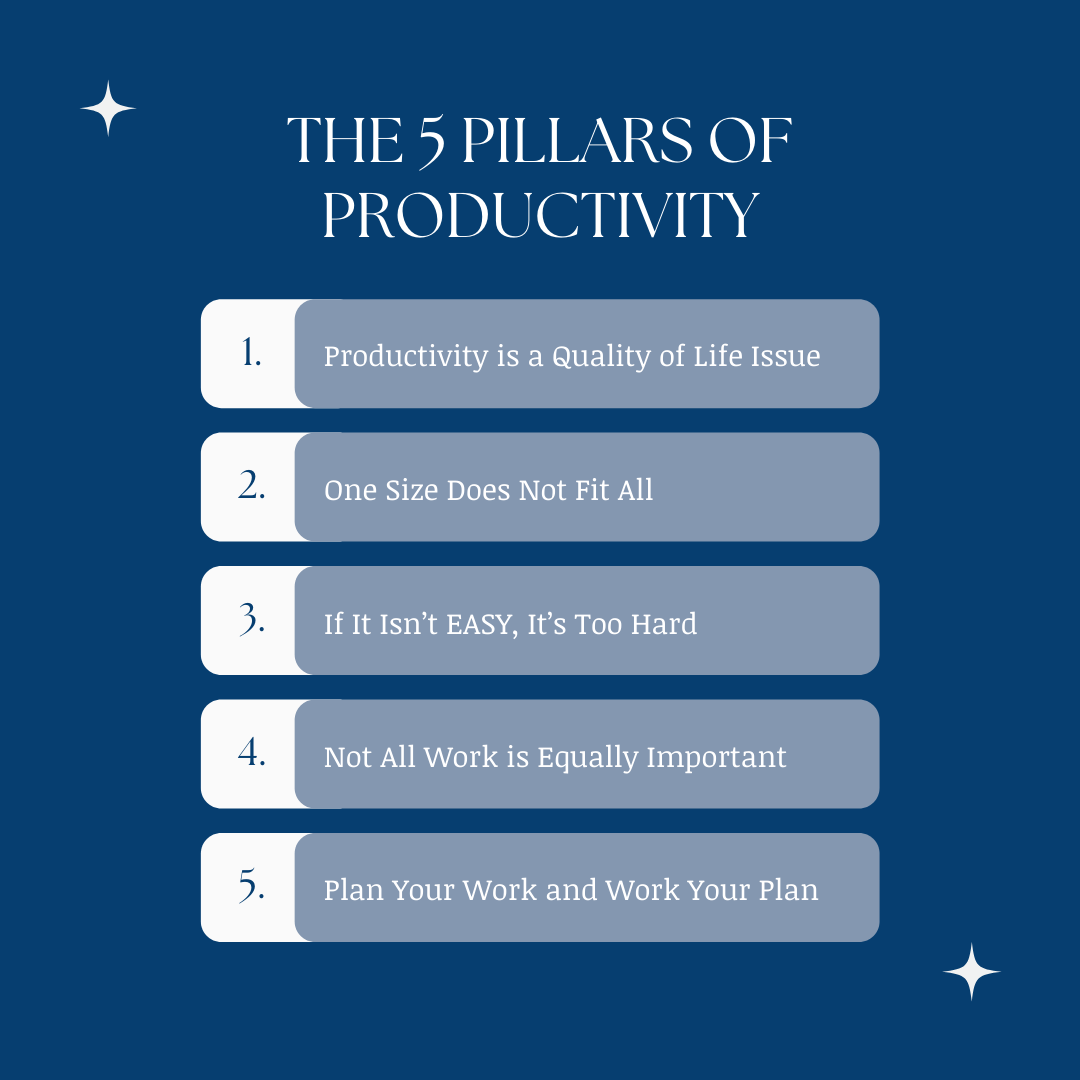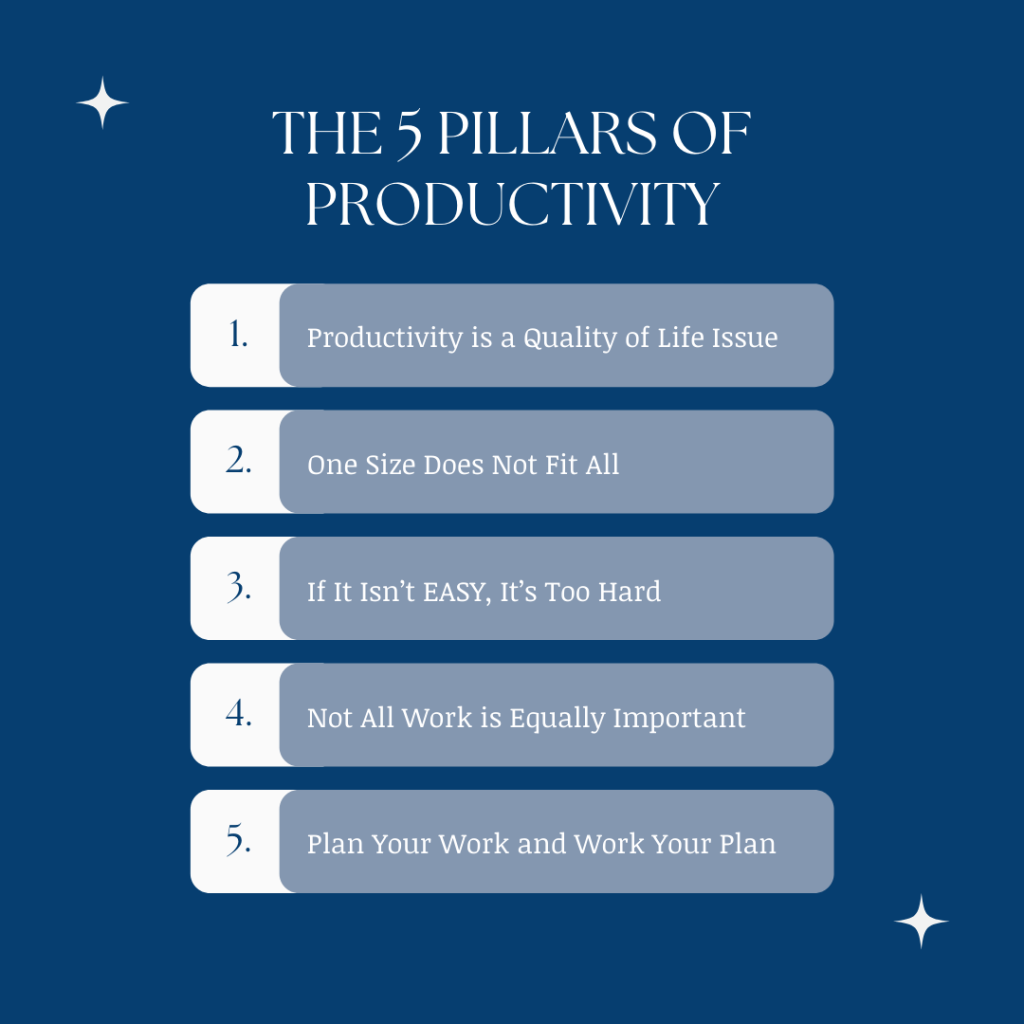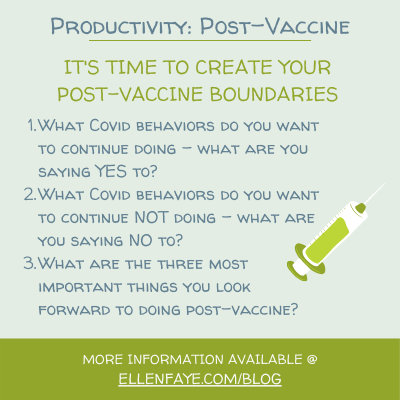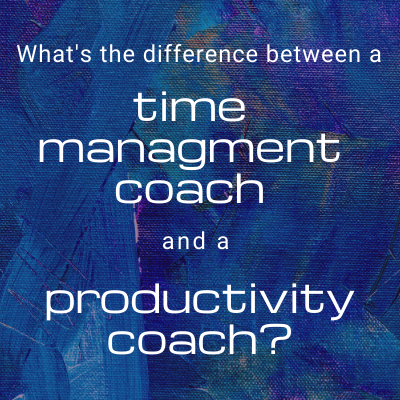15 Feb The 5 Pillars of Productivity
A Note from Ellen: I’ve been working on a book. In the coming weeks I’ll be previewing snippets from the book on my blog. It’s important information I want to share. Today’s post is a summary of Chapter 1. If you would like to learn more, I’ll post book updates here on the blog. It is exciting. Stay tuned!
These 5 pillars of productivity are core to your productivity success. Whatever you learn, whatever you do, keep these in mind and build from here.
Productivity is a Quality of Life Issue
Productivity is a quality of life issue. When we don’t know what is important, we end up doing unimportant things. We spend our weekends thinking we’ll get work done, yet we’re exhausted and don’t. We end up more stressed and less effective come Monday morning, worried about the work we didn’t do. Finding a way to work better brings greater ease, peace, and happiness to both career and life.
One Size Does Not Fit All
Each of us is wired differently, and what works for one person absolutely may not work for someone else. Being willing to experiment and discover productivity solutions that fit YOU is essential. I discuss this pillar in depth in this post: Productivity That Fits How You’re Wired.
If It Isn’t EASY, It’s Too Hard
One of the biggest mistakes that people make when trying to improve their productivity is making their systems too complex. Too many steps and the systems are destined to fail. Too much time to learn the systems and more time is spent on the tool, with little time spent on the task itself.
Not All Work is Equally Important
Pareto’s principle, the 80/20 Rule, supports the concept that you can achieve 80% of the results in 20% of the time. Learning how and when to apply the 80/20 rule helps free up time for important things, in and out of work. Be deliberate in how you invest your time.
- 20% of your work/clients contributes to 80% of your profits
- 20% of your apps are used 80% of the time
- 20% of your meeting time achieves 80% of decisions
- 20% of your time yields 80% of the result
Plan Your Work and Work Your Plan
Taking the time to plan is the secret sauce to productivity. If you think you don’t have time to plan, you don’t have time NOT to plan. Investing a little time for planning drives the shift from overwhelmed to productive.
The greatest benefit of planning may be the process of thinking things through. Winston Churchill may have been right when he said “Plans are worthless, planning is priceless.” Yes, sometimes plans go awry. However, things go much more awry without them.
- Planning helps you stop worrying about missing a deadline or an opportunity.
- Planning helps you to anticipate so surprises are minimized.
- Planning helps you prioritize tasks moving you towards focused success.
- Planning helps you use your time well. When you say yes to something off–plan, you are saying no to working on–plan.













